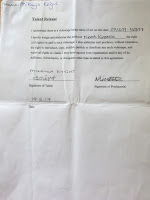For my survey I used survey monkey as a platform to collect my results. I chose to do a survey to ask people what draws them to the music videos they prefer to watch and what genre of music and music video they like to watch. The results helped me to gather ideas for making my own music video and which audience it would appeal to. I took not of gender, age and preferred genre of music. My survey was completed by 76 people giving a wide range of results. I posted my survey to Facebook to get a broad scope of people to take my survey, as my Facebook friends have a vast age range which would give a vast range of responses. I chose to have the replies anonymous so that those taking the survey would feel more comfortable and that they wouldn't be judged for their answers.
The results from my survey show that females were more likely to watch music videos (84% of 76 responses were female) than men, also that those aged 18-24 were the age group more interested in watching music videos. My results also showed me that the people who took my survey have a diverse music taste, but 43% of responses were that people listened to pop music, however 14 people (18%) listened to a genre not specified with in answers to select from. When it comes to where people watched music videos YouTube was the most popular with 56% of the results whereas music channels or other made up the other 46% combined. My survey told me that with those who took it that a studio performance music video was the preferred genre (40%) followed with narrative (24%), out of the 76 that took the survey 2 skipped this question, I feel that may have been because if you aren't aware of the terminology of the question it could have been somewhat difficult to answer and know exactly what they were answering. Also 97% enjoy watching music videos.






















































